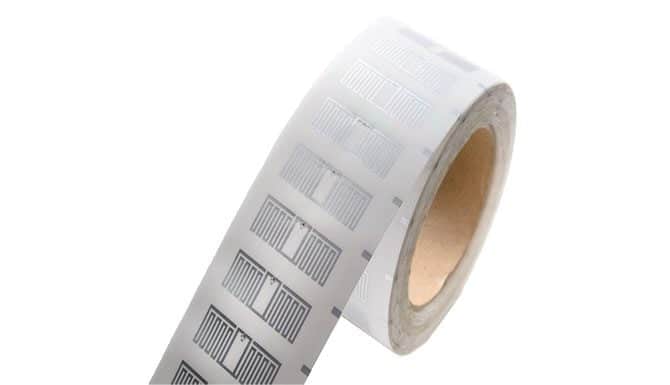There is a growing expectation that everyday objects are connected to the Internet of Things (IoT), so they can either relay data or be managed by a device. Because of this, RFID solutions have become more adaptable, cost effective, and are adding value to more objects and processes than ever before.
So, what exactly are we talking about when we refer to RFID? By now, you’re probably familiar with the tags where information is stored, but, when we talk about RFID solutions we are referring to a tailored system that includes supporting hardware and software.
Here, we’ll walk through a very high level and general overview of the standard components in an RFID system.
Reader and antenna
Data can be stored within RFID tags, but that doesn’t provide any value if it’s not accessible, which is where the antenna and reader (sometimes referred to as the interrogator) come into play. This combo is what receives and transmits radio waves to allow for the conversion of those waves into data. The antenna and reader may be separate pieces of hardware as is the case in many warehouse solutions, or they may also be combined into a single device as is the case of many laboratory solutions.
Computer and network
Once the information on the tag has been accessed and converted, a network and computer get involved. While the reader and antenna receive the data, the data needs to be moved to the computer for interpretation. When the data is collected from the tag, it’s typically not in a human readable format and requires translation.
With certain types of RFID tags, the reader, antenna, and computer can actually all be a single device that you are probably already carrying…your smartphone!
Encoding printer
In the event tags are part of a label solution, an encoding printer is often involved. These connect to a PC in the same way a typical desktop printer would connect, but in addition to being able to print on the face of a label, they can also encode an RFID tag with variable values.
Many printers also have a verification step that ensures the tag was properly encoded prior to printing the label. This is done by reading the ID of the tag, writing to the tag, and then reading the tag again to ensure that the proper data was written to the correct tag.
Software
Last is the software element of the solution. This includes middleware to integrate the tag data into existing systems or perform ID lookups, front-end software to drive the encoding printers, additional middleware to do things like isolate scans/remove duplicates, and even firmware to control the printers themselves.
The software required for each RFID solution varies depending on the elements involved, which is why it’s important to work with a trustworthy integration partner who can help you find the right software for your purposes.
Many elements of an RFID solution are custom and require a plan surrounding the development and implementation in conjunction with the system itself.
An example may be the ability to look up a product value with a scan at the point of use, such as the description, from a centralized SQL database. The scan could trigger the description to be displayed on the user interface and write back to the SQL database to lower the inventory by a quantity of one as the product is consumed. Data collected from systems like this can be used to automate the reordering process or even predict when it’s time to reorder!
In order to achieve the best possible results when attempting to implement a solution such as the example above, it’s best practice to work with a full solution provider that can tailor or even engineer custom solutions to best fit for your particular requirements. To learn more about what RFID can do or if you have any questions reach out to us directly!

